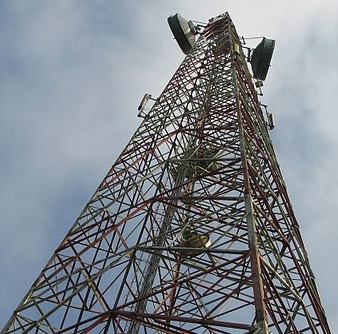Defence agrees to free 3G spectrum, but govt to sit on it
22 Jan 2015
The ministries of defence and telecommunications have finally resolved the long-pending issue of the defence establishment releasing spectrum for commercial use. But telecom operators will hardly raise a cheer, as the additional spectrum won't be put up for sale in a hurry.
 The cabinet on Wednesday approved the 3G spectrum swap between the department of telecommunications (DoT) and the defence ministry. Now the department of telecommunications (DoT) will get 15 MHz of spectrum in the 3G band of 2100 MHz in return for an equal quantum in the 1900 MHz band to defence.
The cabinet on Wednesday approved the 3G spectrum swap between the department of telecommunications (DoT) and the defence ministry. Now the department of telecommunications (DoT) will get 15 MHz of spectrum in the 3G band of 2100 MHz in return for an equal quantum in the 1900 MHz band to defence.
''We have resolved a number of issues that were pending for around eight years,'' communications minister Ravi Shankar Prasad told reporters after the cabinet meeting. But he refused to specify a timeline for auctioning the extra spectrum, saying ''it would take time''.
As a result, in the auction due next month, only 5 MHz spectrum in the 2100 MHz or 3G band would be available, along with 800, 900, and 1800 bands.
Telecom operators as well as analysts have for months been criticising the government for selling 3G spectrum in piddling amounts, which inflates bids to garner more funds for the government but does not help either the telecom companies or users. 'Broadband' speeds in India will continue to remain among the slowest in the world.
Under the cabinet deal, of the 49 bands of spectrum 3 MHz and 40 GHz, nine have been identified for exclusive use by the defence establishment. In 31 other bands different users like telecom firms, broadcasters, civil aviation and space would co-exist.
Additionally, a 'Defence Interest Zone' has been marked up to 50 km inside India's international borders, where spectrum will be used for telecom operations only in times of peace, with the defence ministry kept in the loop. Any defence operation during such times will need approval of the government, according to the minister.
''For the remaining nine slots, a working group has been constituted to sort out the issues and figure out what has to be done,'' Prasad said.
Telecom secretary Rakesh Garg said, ''Within one year, ministries will have to harmonise spectrum and identify a timeline by when will they be able to vacate spectrum not marked from them. In 4-5 years, everyone will have to free spectrum not marked for them.''
Meanwhile, consumers will have to continue struggling with abysmal speeds, bearing the frustration of time and money being wasted.
The ministries of defence and telecommunications have finally resolved the long-pending issue of the defence establishment releasing spectrum for commercial use. But telecom operators will hardly raise a cheer, as the additional spectrum won't be put up for sale in a hurry.
The cabinet on Wednesday approved the 3G spectrum swap between the department of telecommunications (DoT) and the defence ministry. Now the department of telecommunications (DoT) will get 15 MHz of spectrum in the 3G band of 2100 MHz in return for an equal quantum in the 1900 MHz band to defence.
''We have resolved a number of issues that were pending for around eight years,'' communications minister Ravi Shankar Prasad told reporters after the cabinet meeting. But he refused to specify a timeline for auctioning the extra spectrum, saying ''it would take time''.
As a result, in the auction due next month, only 5 MHz spectrum in the 2100 MHz or 3G band would be available, along with 800, 900, and 1800 bands.
Telecom operators as well as analysts have for months been criticising the government for selling 3G spectrum in piddling amounts, which inflates bids to garner more funds for the government but does not help either the telecom companies or users. 'Broadband' speeds in India will continue to remain among the slowest in the world.
Under the cabinet deal, of the 49 bands of spectrum 3 MHz and 40 GHz, nine have been identified for exclusive use by the defence establishment. In 31 other bands different users like telecom firms, broadcasters, civil aviation and space would co-exist.
Additionally, a 'Defence Interest Zone' has been marked up to 50 km inside India's international borders, where spectrum will be used for telecom operations only in times of peace, with the defence ministry kept in the loop. Any defence operation during such times will need approval of the government, according to the minister.
''For the remaining nine slots, a working group has been constituted to sort out the issues and figure out what has to be done,'' Prasad said.
Telecom secretary Rakesh Garg said, ''Within one year, ministries will have to harmonise spectrum and identify a timeline by when will they be able to vacate spectrum not marked from them. In 4-5 years, everyone will have to free spectrum not marked for them.''
Meanwhile, consumers will have to continue struggling with abysmal speeds, bearing the frustration of time and money being wasted.






















